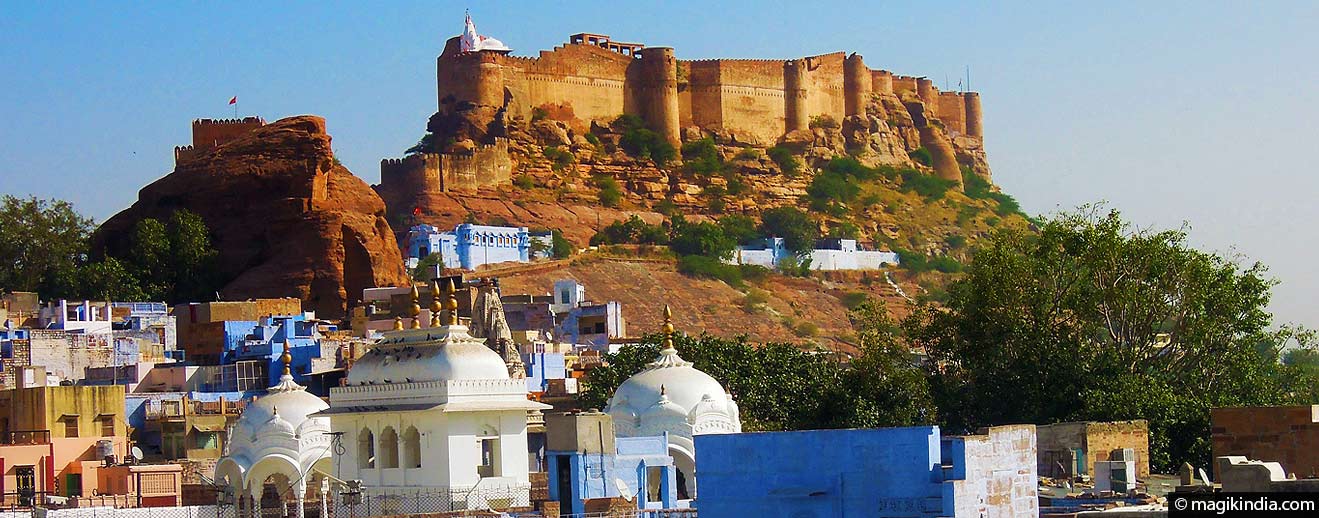
Jodhpur, the blue city of Rajasthan
Overlooked by its imposing fort (called “the magnificent”), the blue city makes the most of its heritage with a number of top rank cultural festivals. The stunning landscapes of the Thar desert all around and the busy streets of the colourful old town will bring you back to Jodhpur again and again.
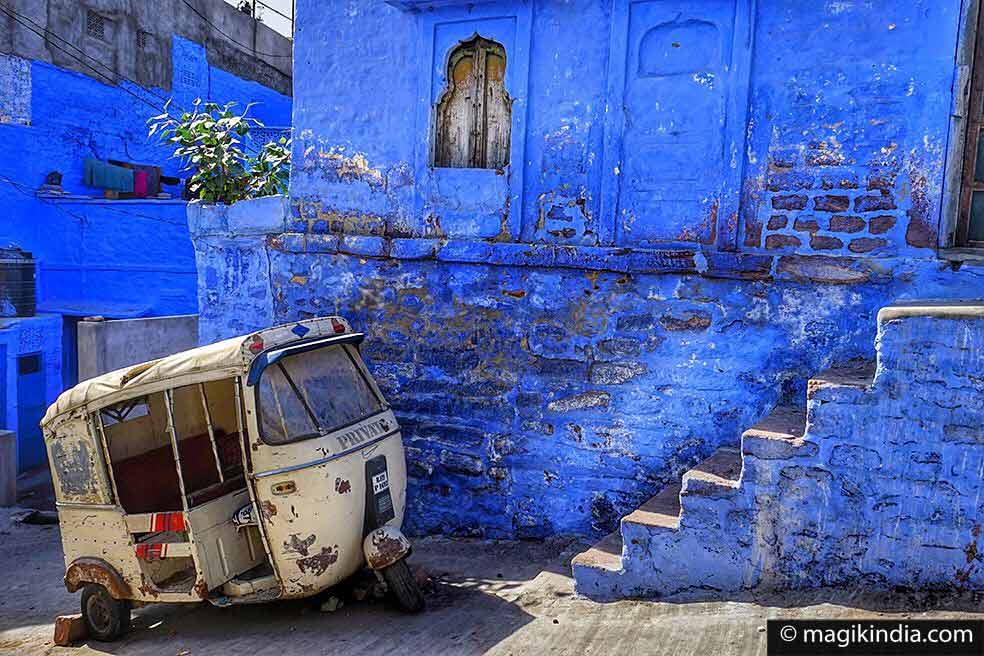
Jodhpur, former capital of Marwar and second largest city in Rajasthan, was founded in 1459 by Rao Jodha, a Rajput Rathore clan chief.
The city’s many blue-painted houses have earned it the nickname of Blue City. Originally blue indicated that a house belonged to members of the Brahman caste. Blue is also said to repel mosquitoes and protect a house from heat.
The town hosts many festivals of excellent quality. They generally take place in the idyllic setting of Mehrangarh Fort.
Festivals not to miss
World Sacred Spirit festival
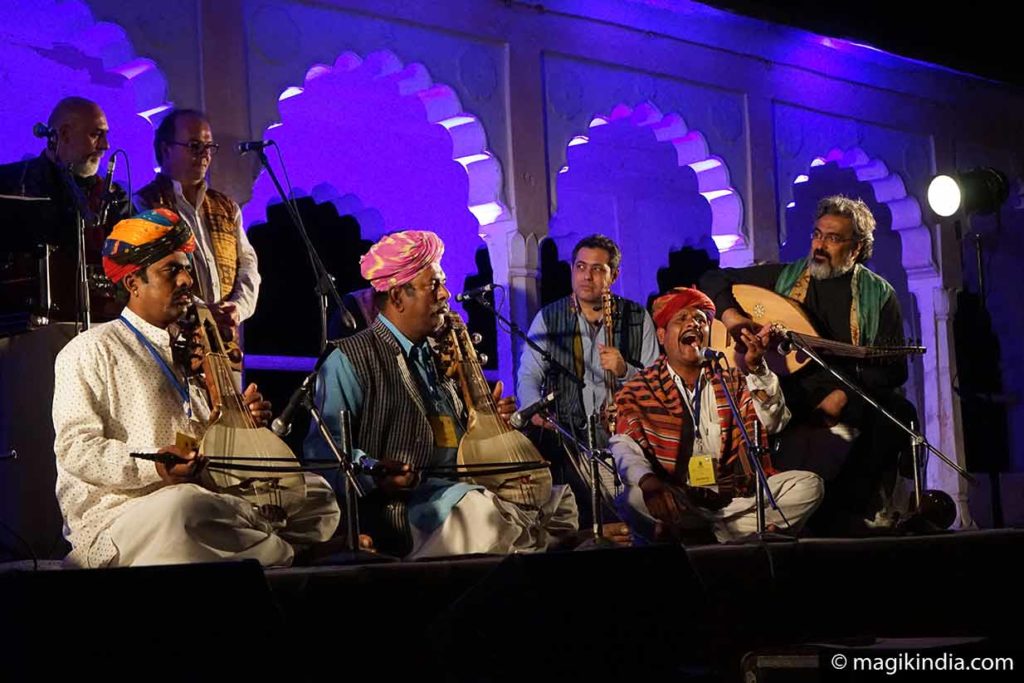
The World Sacred Spirit Festival brings together eminent musicians from all over the world to explore the sacred through different forms of art from music and chant to dance and poetry. A festival of Sufi-inspired devotional music set in the magical and prestigious sites of Ahhichatragarh in Nagaur and Mehrangarh Fort in Jodhpur…
KNOW MORE ABOUT ITThe Rajasthan International Folk Festival (RIFF)
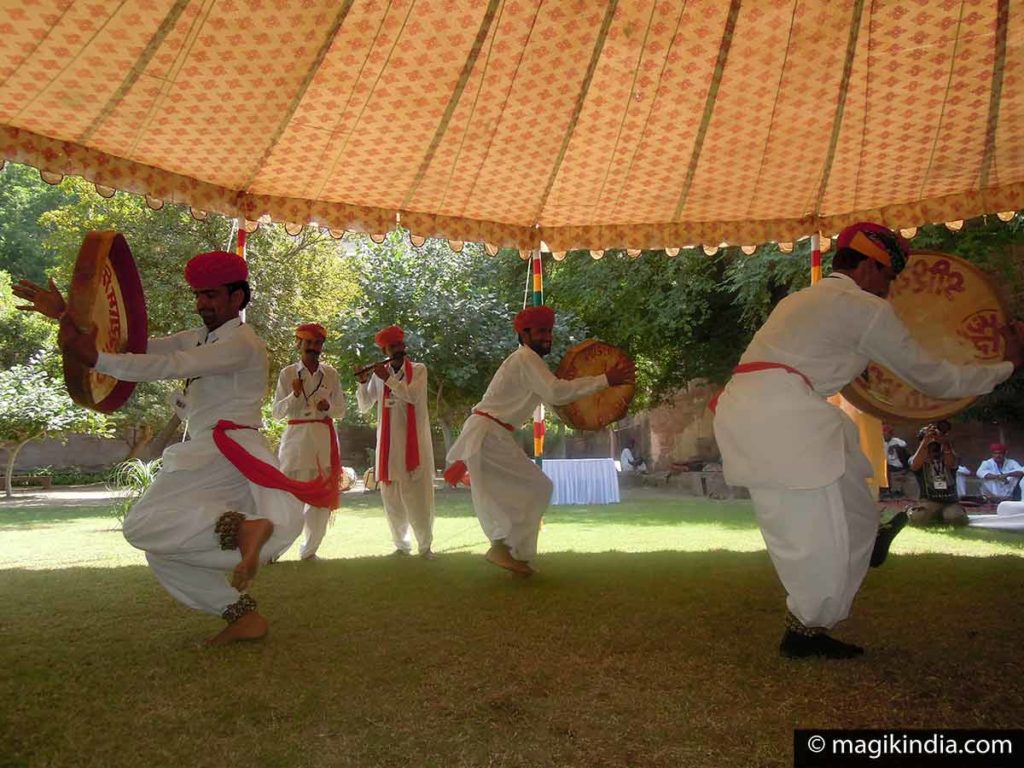
The Rajasthan International Folk Festival or RIFF is held yearly in the Jodhpur fort, at Sharad Purnima, and lasts four days.
It draws considerable crowds of world music fans, both Indian and foreign. The festival, first held in 2007, is organised by the Mehrangarh Museum Trust and the Jaipur Virasat foundation. Each year over a hundred acts come to perform. The music to be heard at RIFF is top quality. The festival promotes the art of Rajasthani music while also bringing in international acts…
KNOW MORE ABOUT ITMarwar Festival
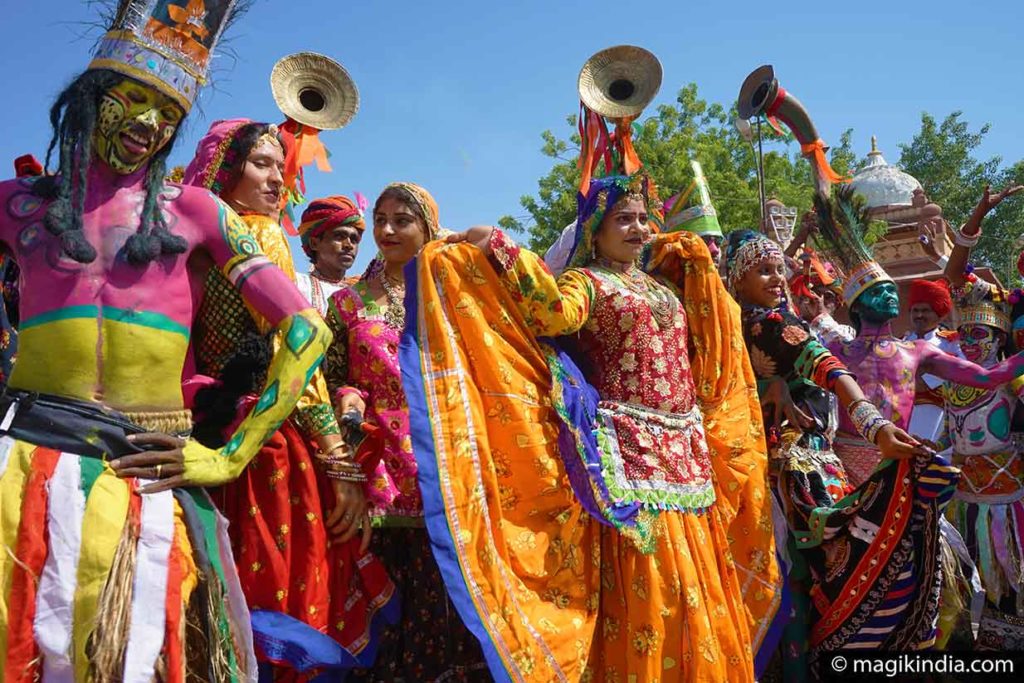
The festival’s main theme is the music and dance of the Marwar region.The first day starts with a parade, followed by various attractions such as camel tattooing and competitions for the best-knotted turban or the longest moustache. In the evening there are live shows on a stage at the Clock Tower. The festival’s second day is usually held in Osian, 70km from Jodhpur, on the sand dunes, with camel rides in the day and a cultural programme in the evening. It’s an amusing festival for getting to know the folk culture of Rajasthan…
KNOW MORE ABOUT ITAnd now, let’s visit Jodhpur!
Mehrangarh Fort
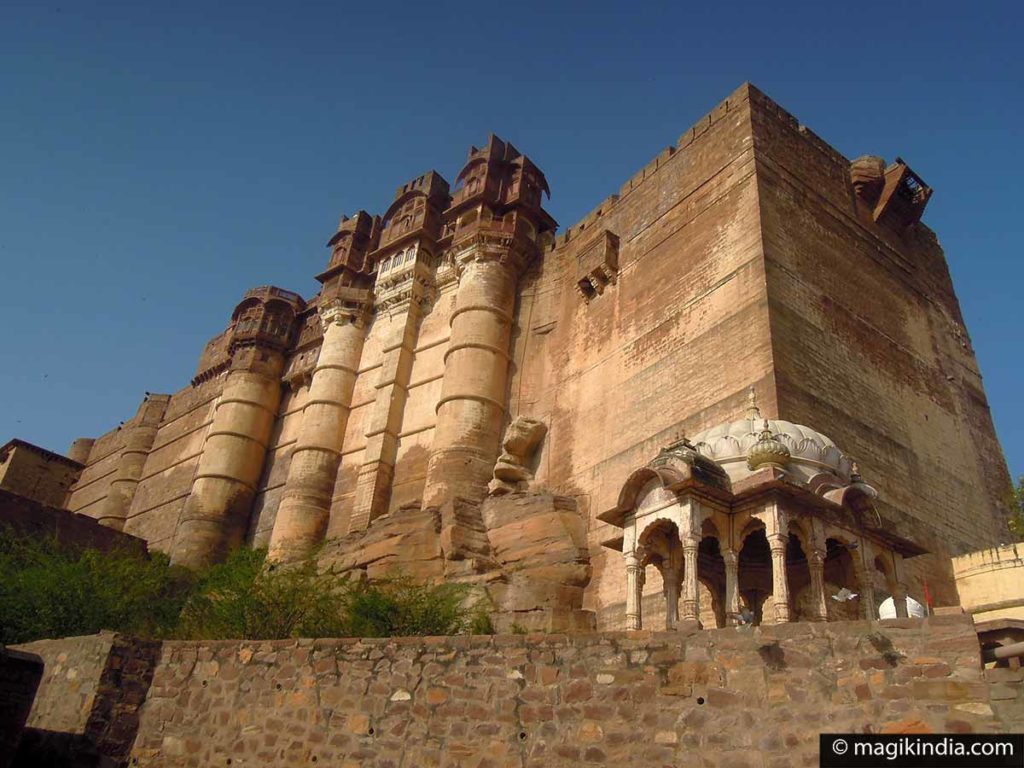
Mehrangarh Fort is undeniably one of the loveliest forts in Rajasthan and is often, and rightly, described as the “magnificent”.Imposing yet delicate in style, from its somewhat plain exterior one would never guess how refined the architecture and decoration are inside.
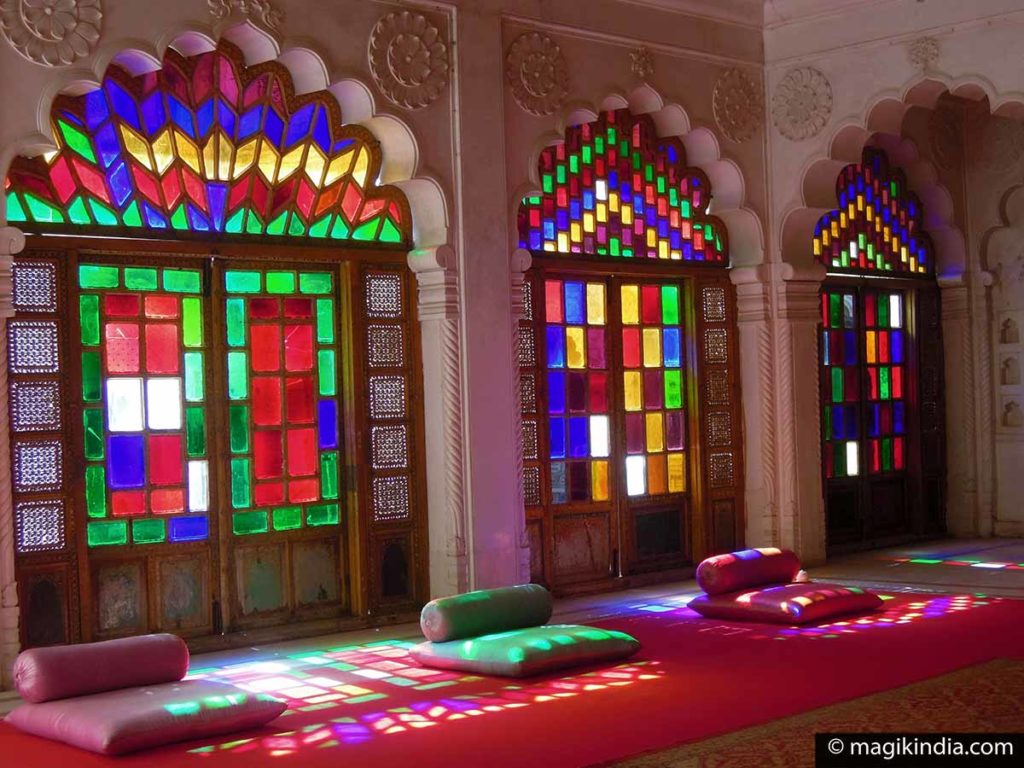
Built around 1460 by Rao Jodha, the fort is situated 410 feet above the city and is enclosed by imposing thick walls. Inside its boundaries there are several palaces known for their intricate carvings and expansive courtyards .
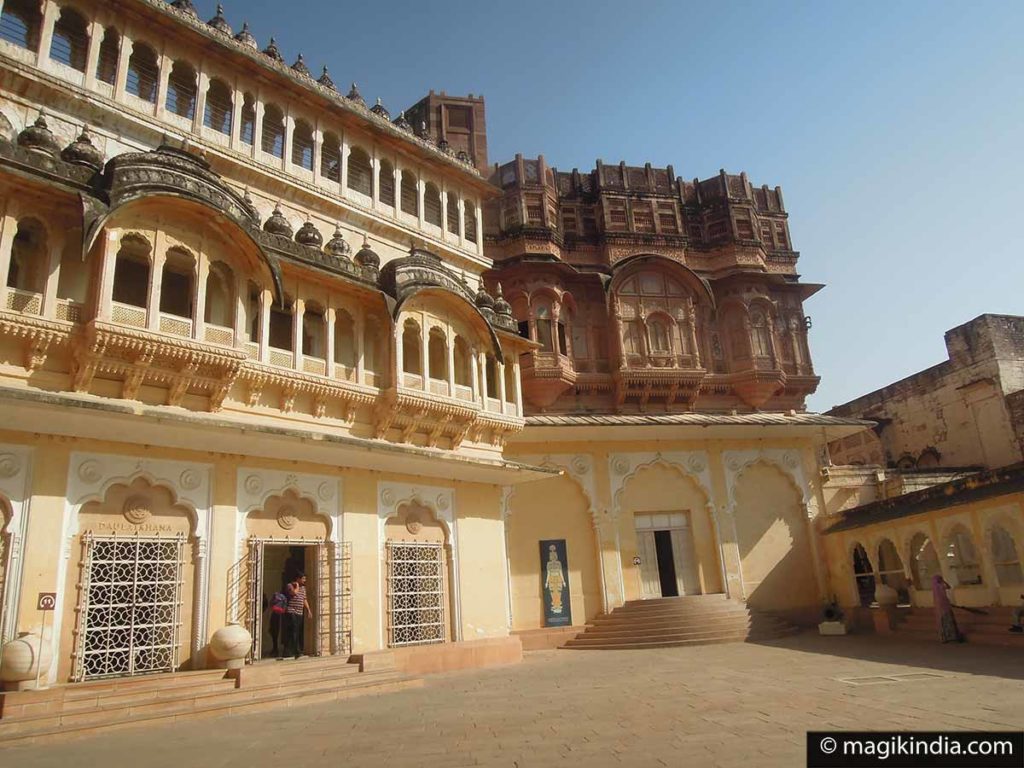
Most of the rooms have been turned into a museum. The museum in the Mehrangarh fort is one of the most well-stocked museums in Rajasthan. There are a selection of old royal palanquins, of finest examples of Marwar paintings and costumes and turbans galleries, etc.
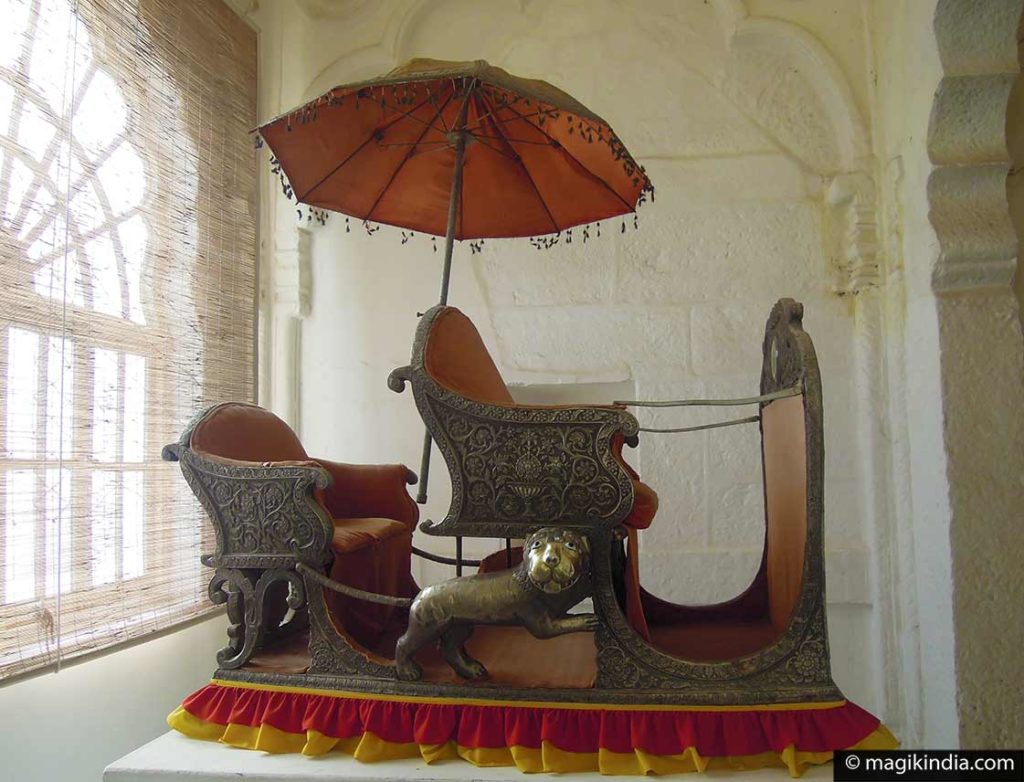
Zipline – Jodhpur Fort
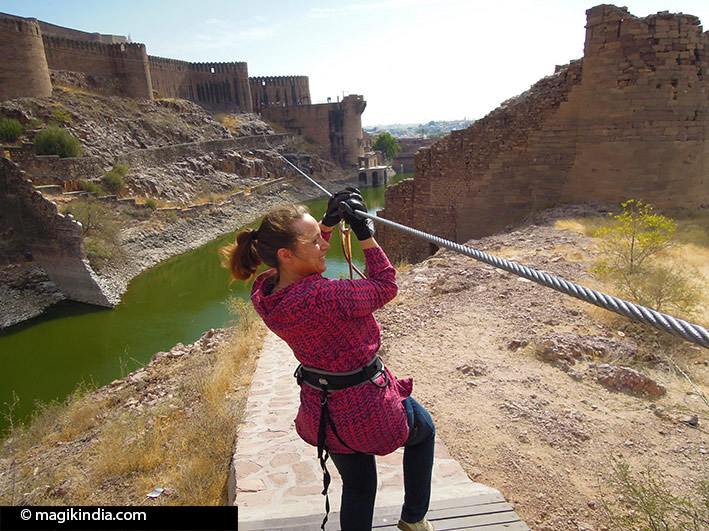
Friendly staff, breathtaking panoramic views of the fort and the town: the zipline tour around the outer battlements of Mehrangarh fort is an unforgettable sight with an adrenaline rush to boot.
Jaswant Thada
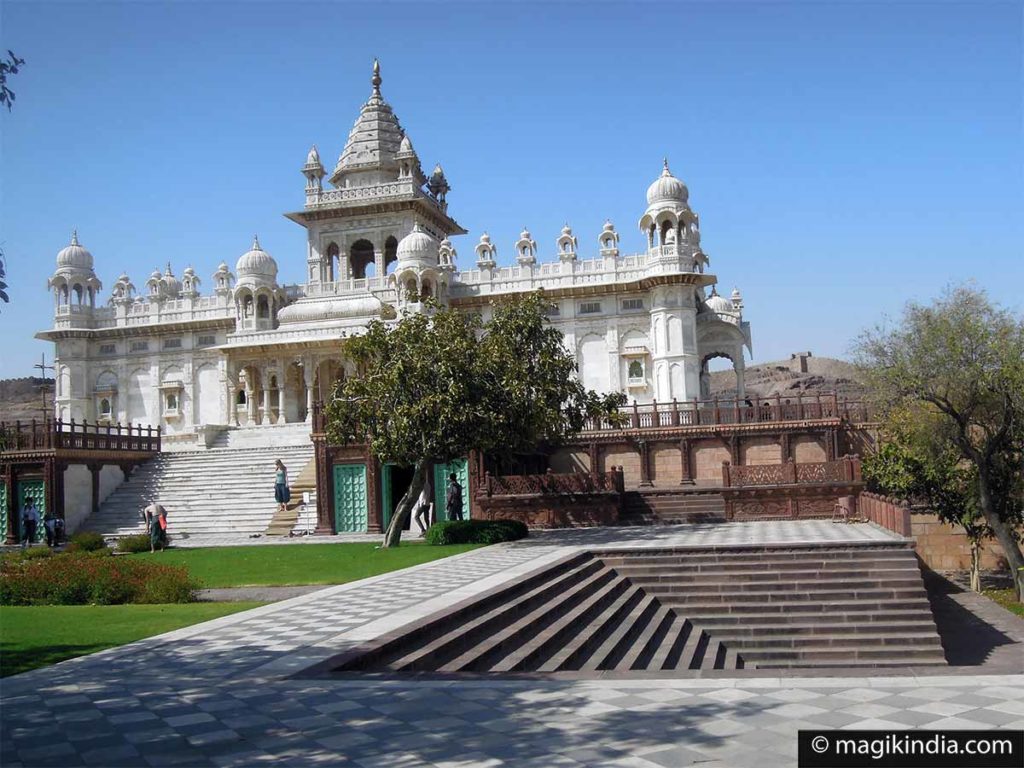
On the road, one kilometer from the fort, stands the Jaswant Thada, the cremation site of the Maharajas of Jodhpur. It was inaugurated in 1899 by Maharaja Sardar Singh in memory of his father Maharaja Jaswant Singh II. It is built of white marble throughout and is intricately carved and polished so that the sun’s rays bathe it in a warm glow.
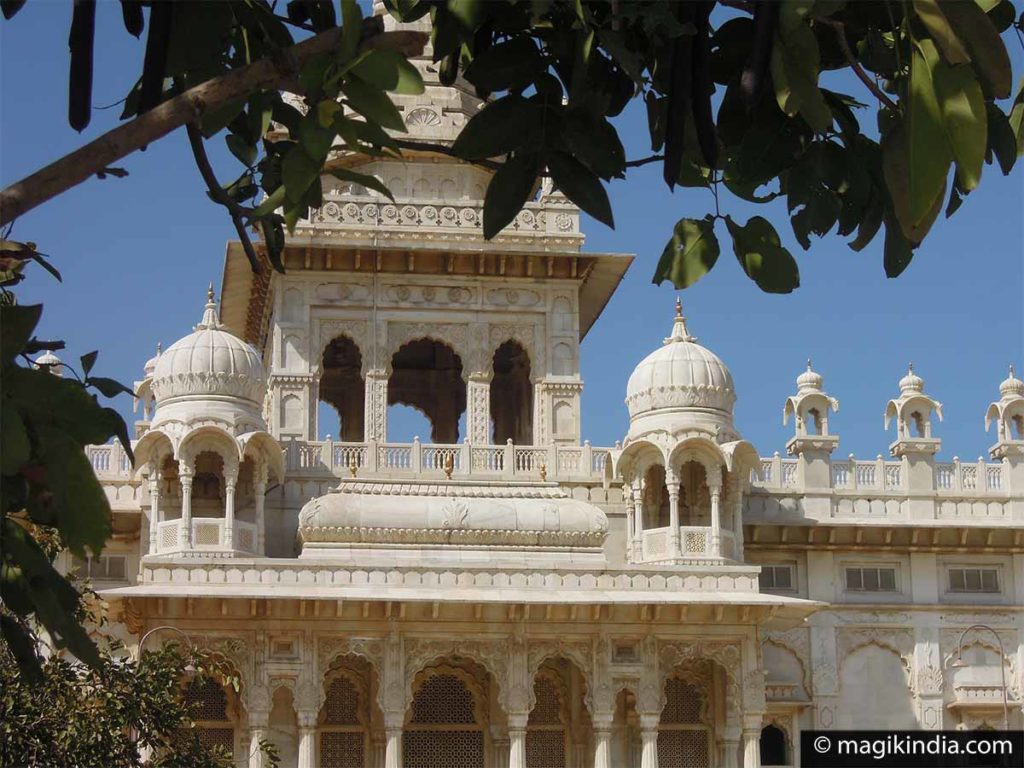
Walk in the old blue town, Navchokiya & Pachetia Hill
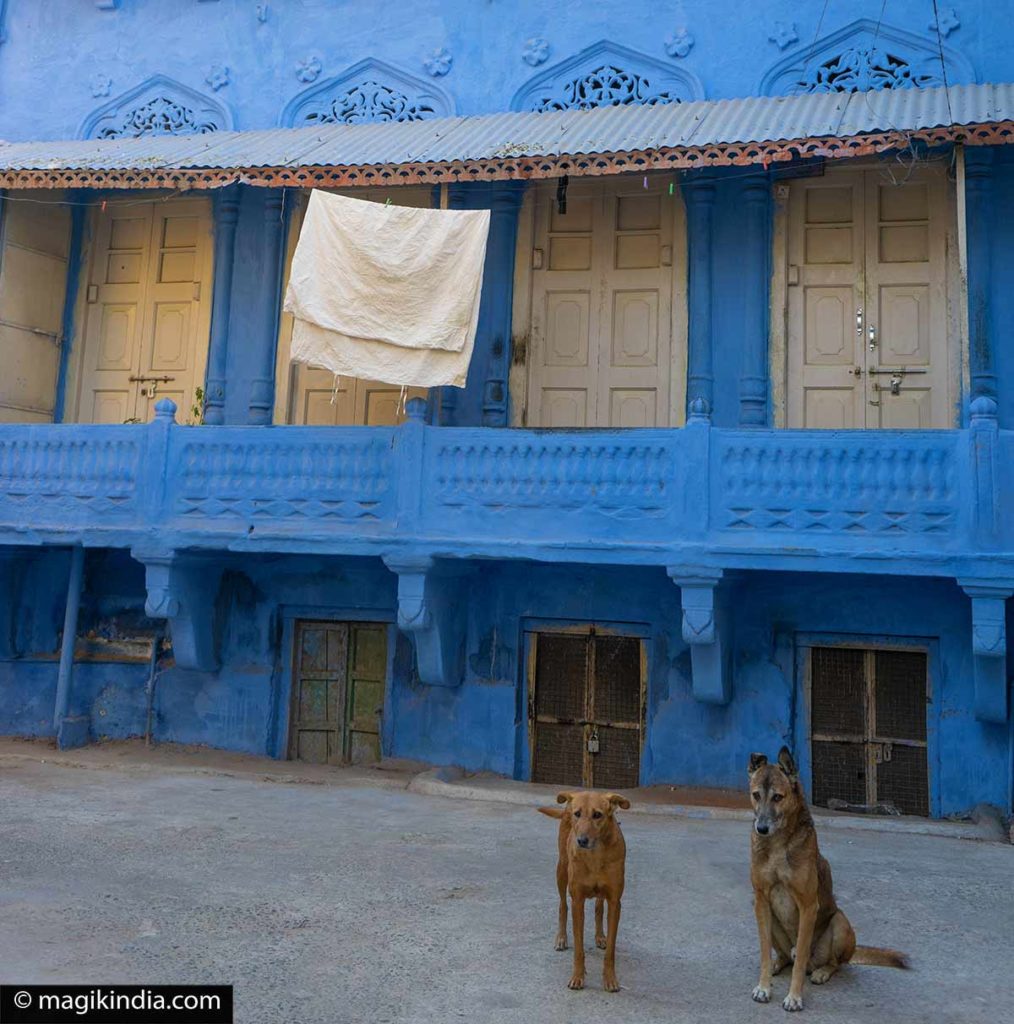
If there is one thing not to be missed in Jodhpur, it is the walk in the old city of Jodhpur (Navchokiya and Bramh puri) through the alleys lined with old houses (havelis). The name ‘blue city’ takes on its full meaning here.
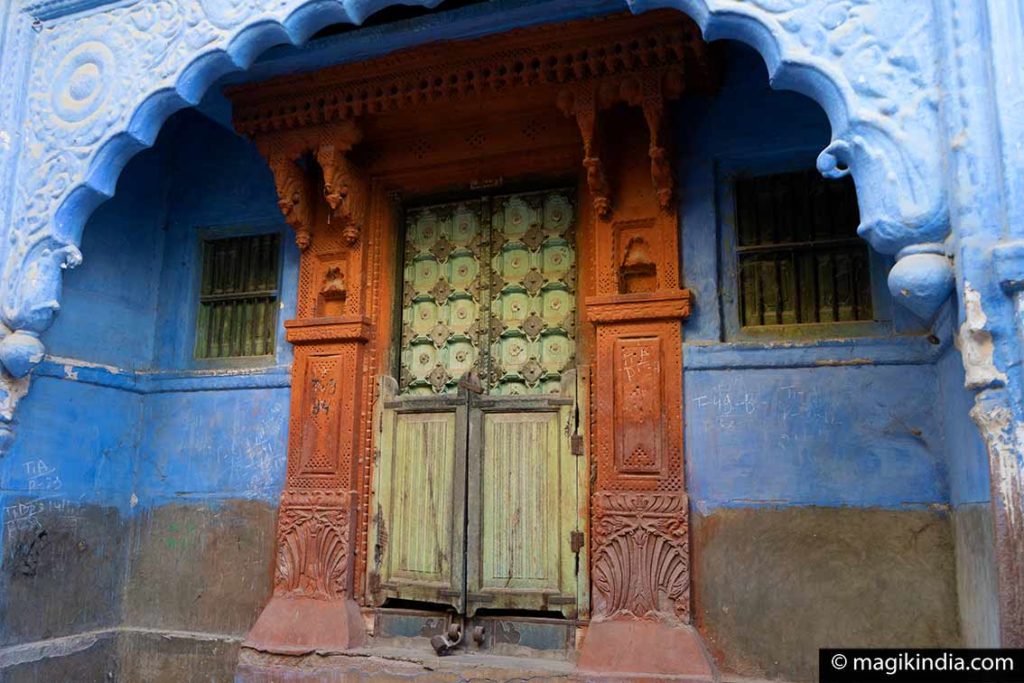
You can go there alone, but a guide is preferable, the walk could turn into a real labyrinth and the information given by the guide is also precious.
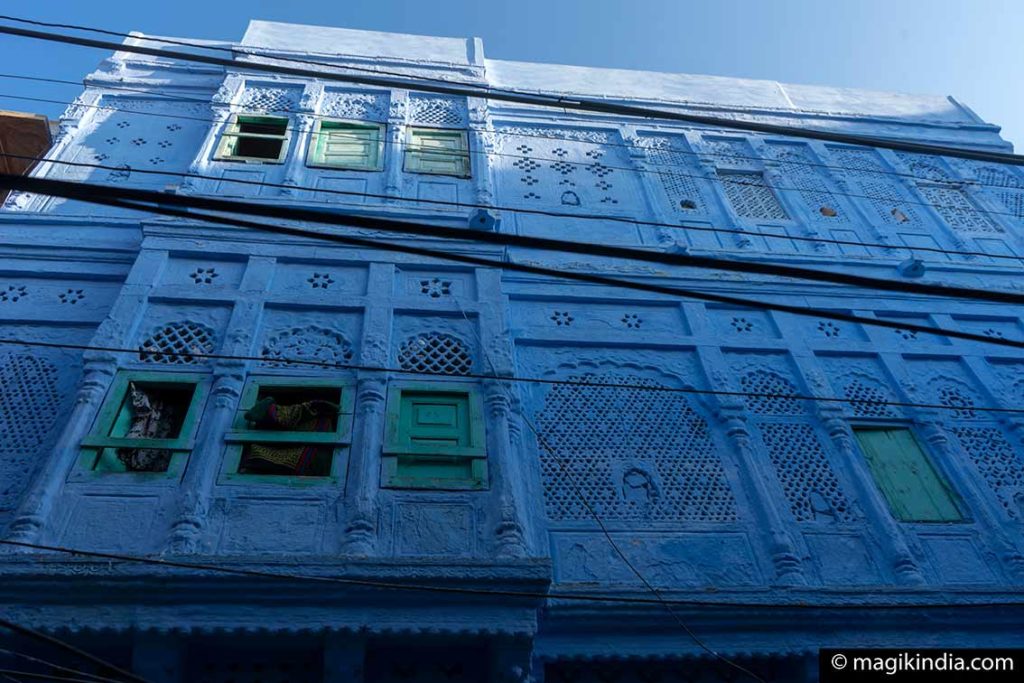
After a walk of about two hours, the point of arrival, preferably at sunset, is the Pachetia hill. Here, the view of the whole city and the fort is breathtaking.
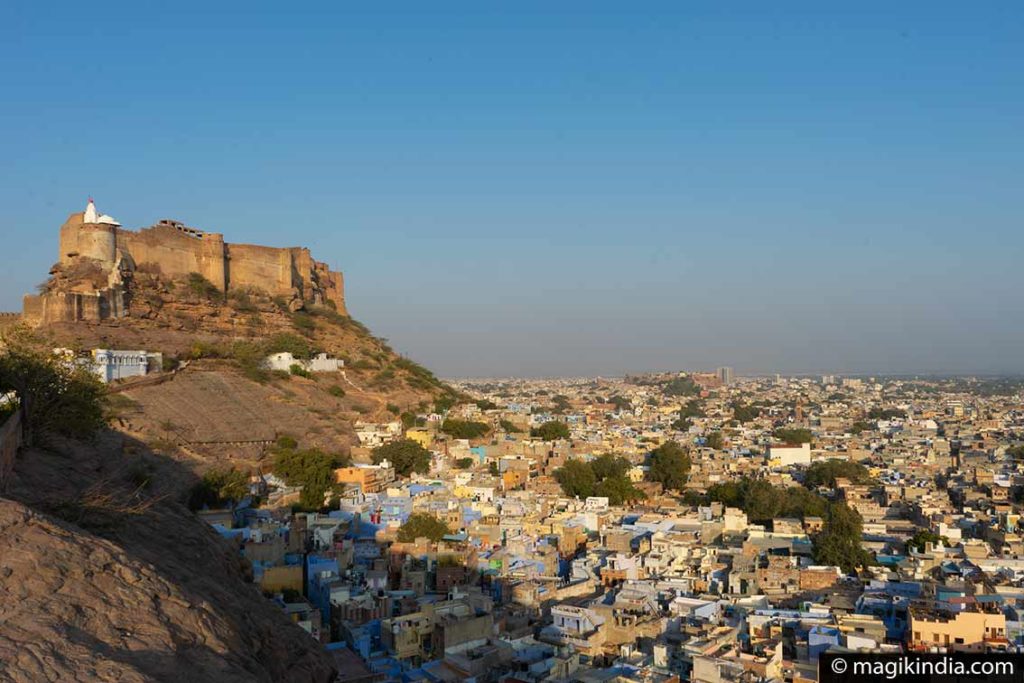
Clock Tower and Sagar Bazar
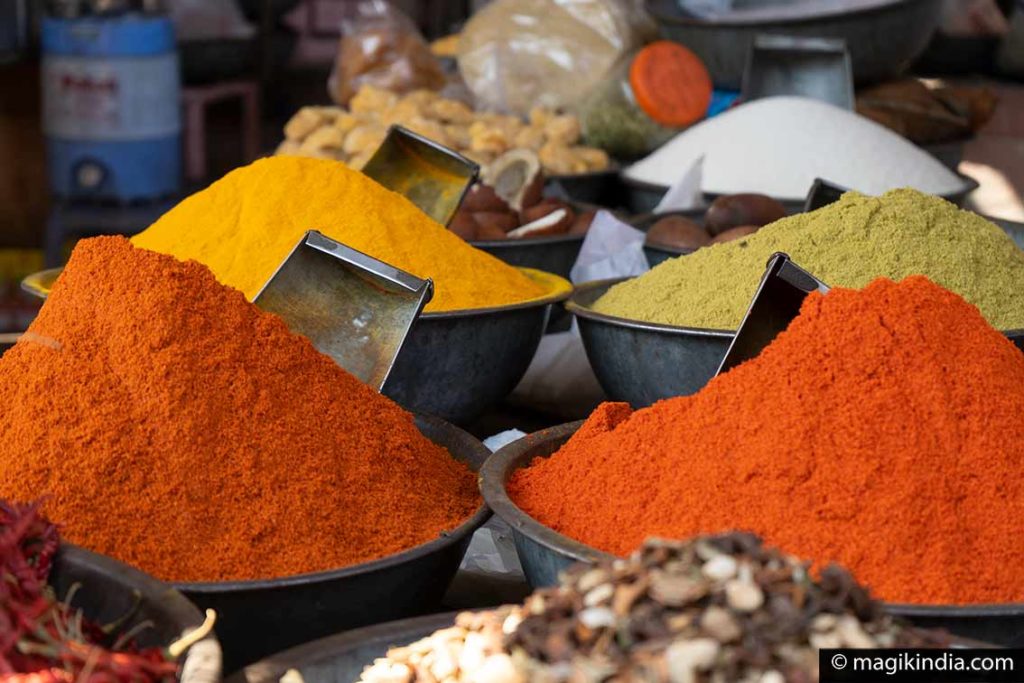
In Jodhpur as in many Rajasthan towns, it’s great to amble through the old town, wander among the people and just take life as it comes.
The Sardar bazaar is the town’s best-known market of Jodhpur. Here you can find everything: groceries, fruits and vegetables, trimmings, clothes and refreshing fruit juices at the ‘Om Juice Corner’.
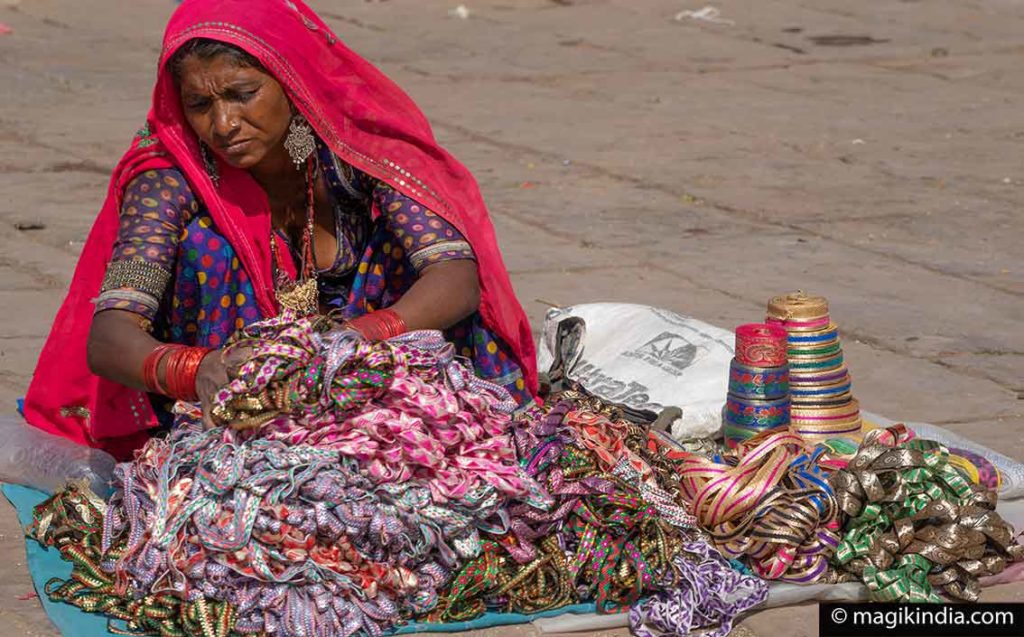
In the center of the bazaar square stands the ‘Clock tower’ or Ghantagar, highlighted at dusk by beautiful coloured lights. This clock tower was built by Maharaja Sardar Singh, hence the name of the bazaar.
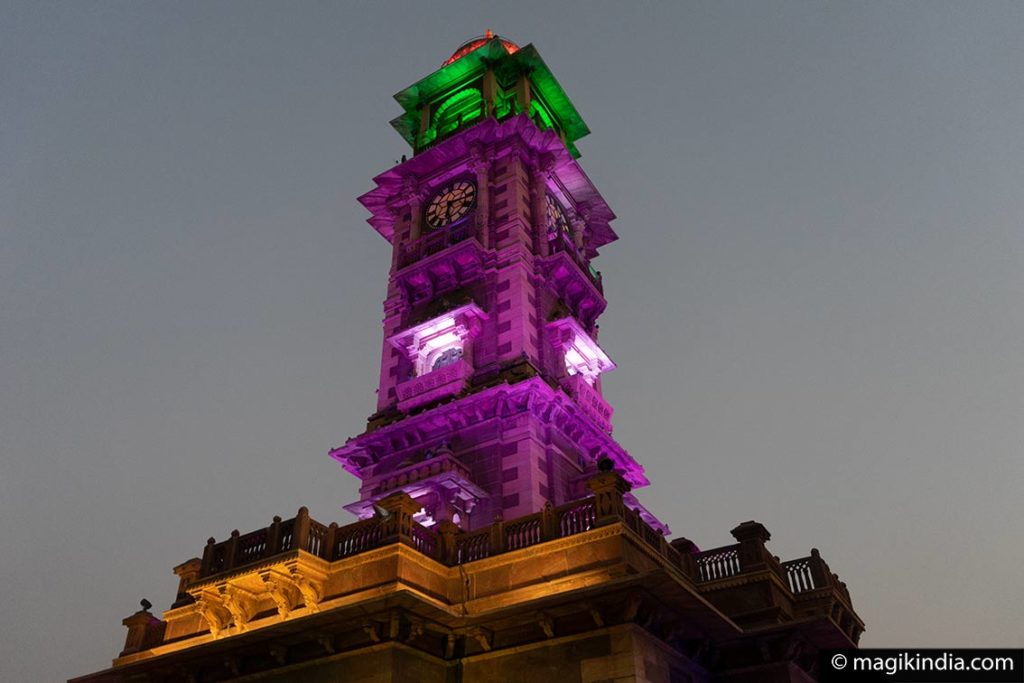
Kunj Bihari Ji temple
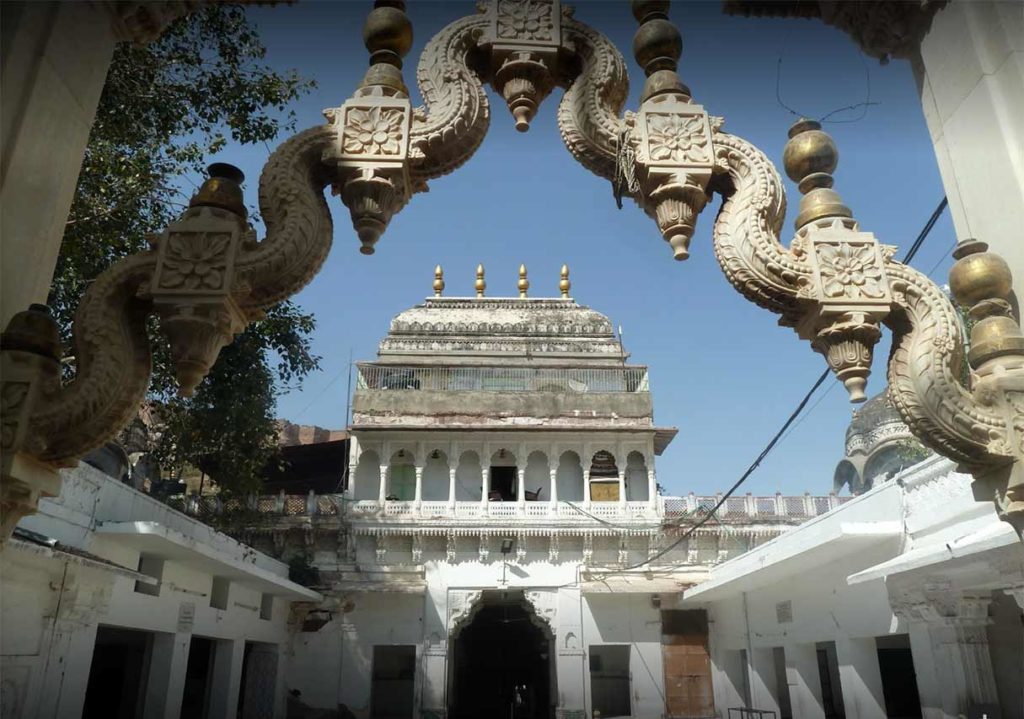
Nearby the clock tower, in the old city, stands the Shri Kunj Bihari Ji temple. One of my favourite places in Jodhpur.
This delicate temple, built in 1847 is dedicated to Thakur Kunj Bihari Ji a form of Lord Krishna also known as Sri Nathji, and belongs to Rama Nandi Vaishnava sect of Hindus. This structure was constructed by Maharaja Vijay Singhiji in the memory of his son, Sher Singh, who died at a very young age.
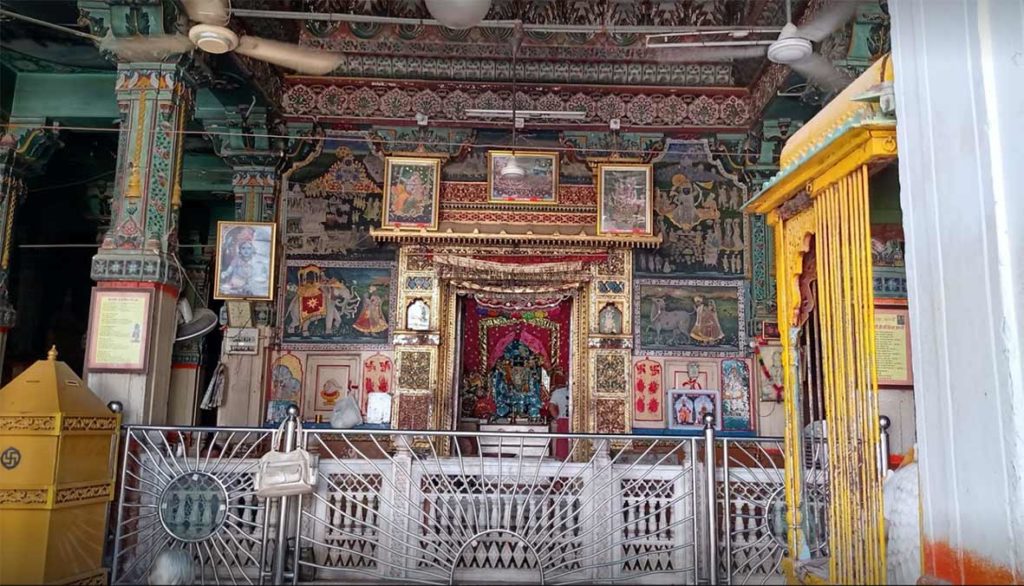
Toonwar ji ka jhalra (stepwell)
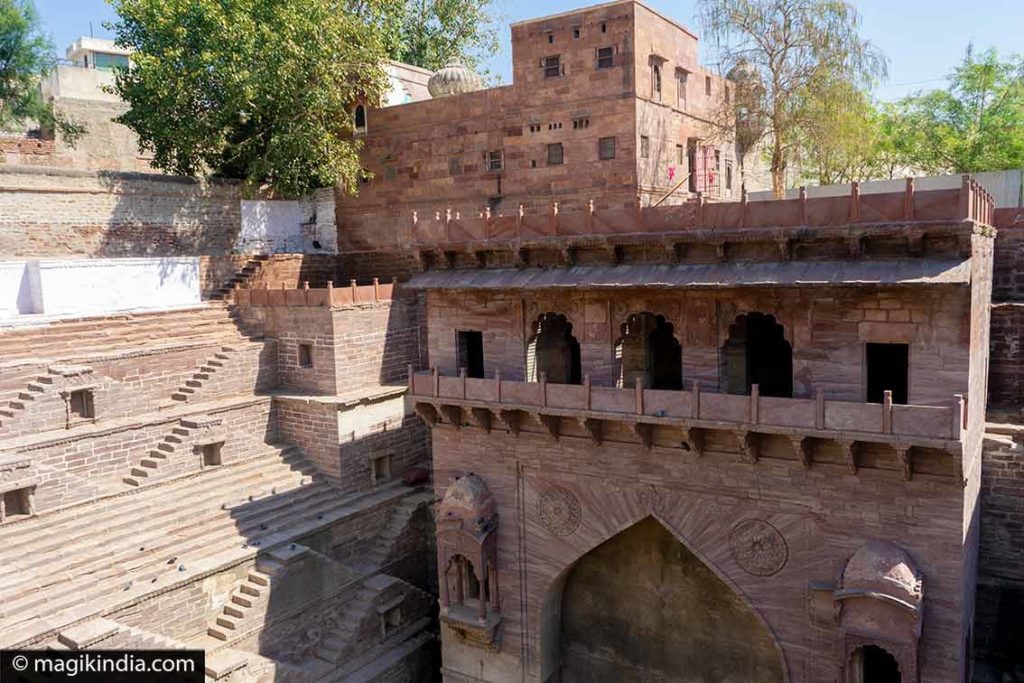
This stepwell or jhalra located in the old city is certainly one of the most amazing places of the old Jodhpur. it is an architectural marvel built in 1748 under the reign of Maharaja Abhaya Singh by his Maharani, Bada Tunwar Ji Patan from Gujarat.
The well remained unknown to tourists for a long time, as it was in poor condition. We walked past without seeing it. I discovered it only after my third visit to Jodhpur!
When its renovation was completed around 2016, the area suddenly transformed and chic boutiques opened all around. This place is now reemerging as a cultural hotspot especially with the youth. You can find some impromptu music performances happening there in the evenings.
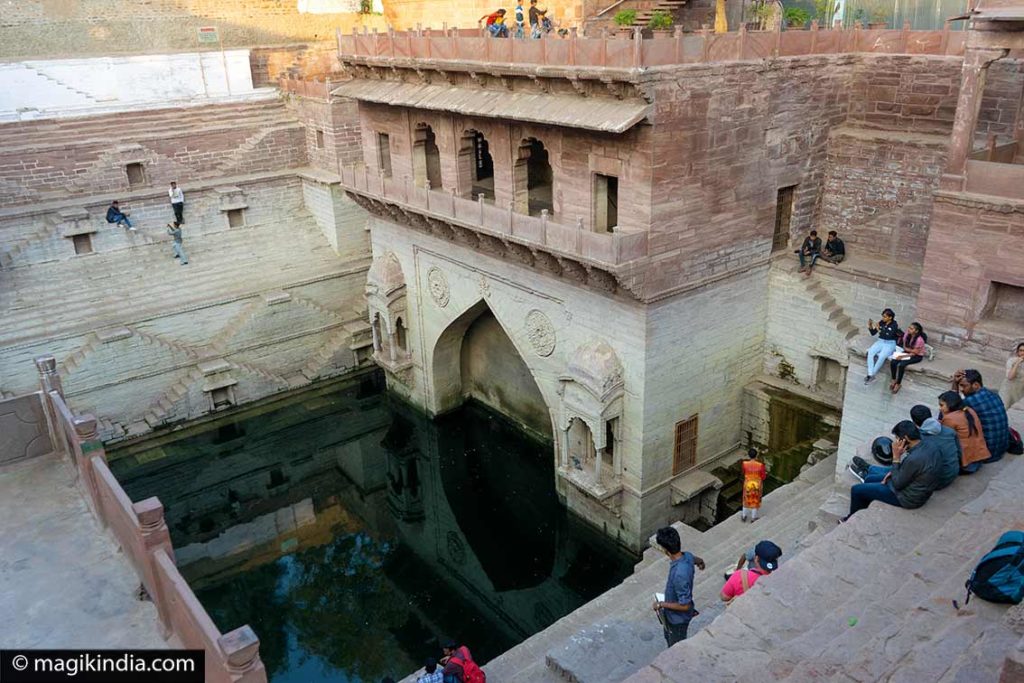
Umaid Bhawan Palace
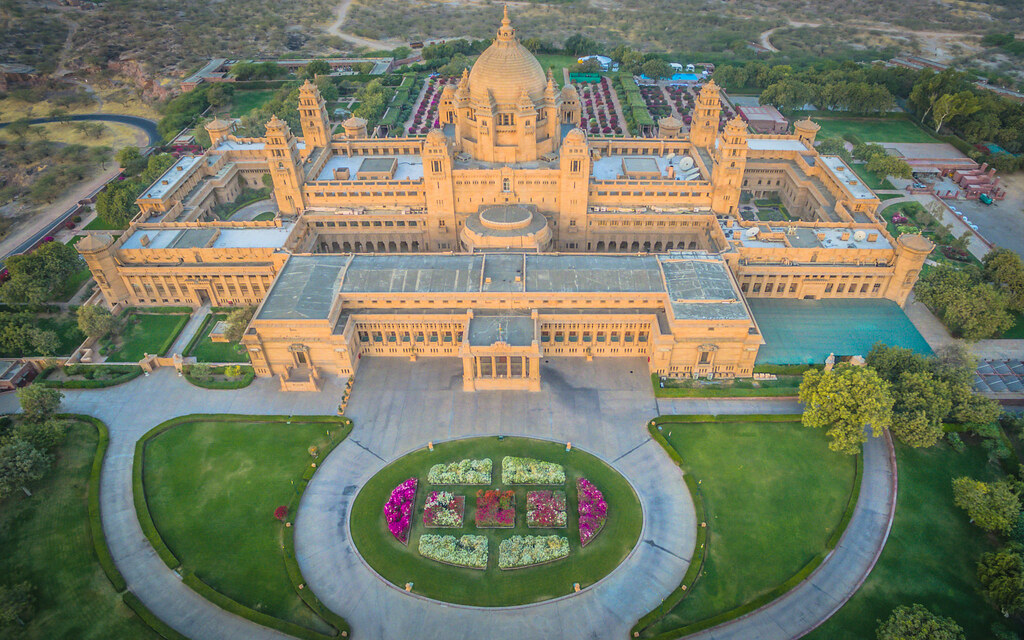
This imposing building is the home of the current Maharaja and his family. It is one of the largest private residences in the world – the construction work lasted from 1929 to 1943. It is named after Maharaja Umaid Singh, who commissioned it.
Only the small museum dedicated to the princely family is open to the public. If your budget permits, you can treat yourself to a night or two in the 5-star palace hotel managed by the Taj Hotels Resorts and Palaces since 1972.
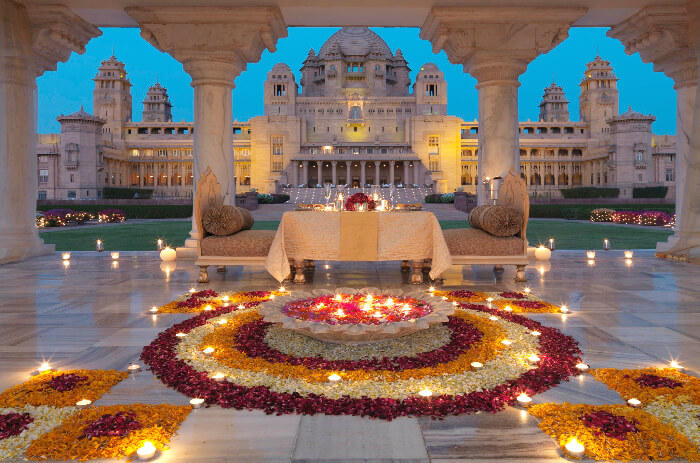
Mandore (9km)
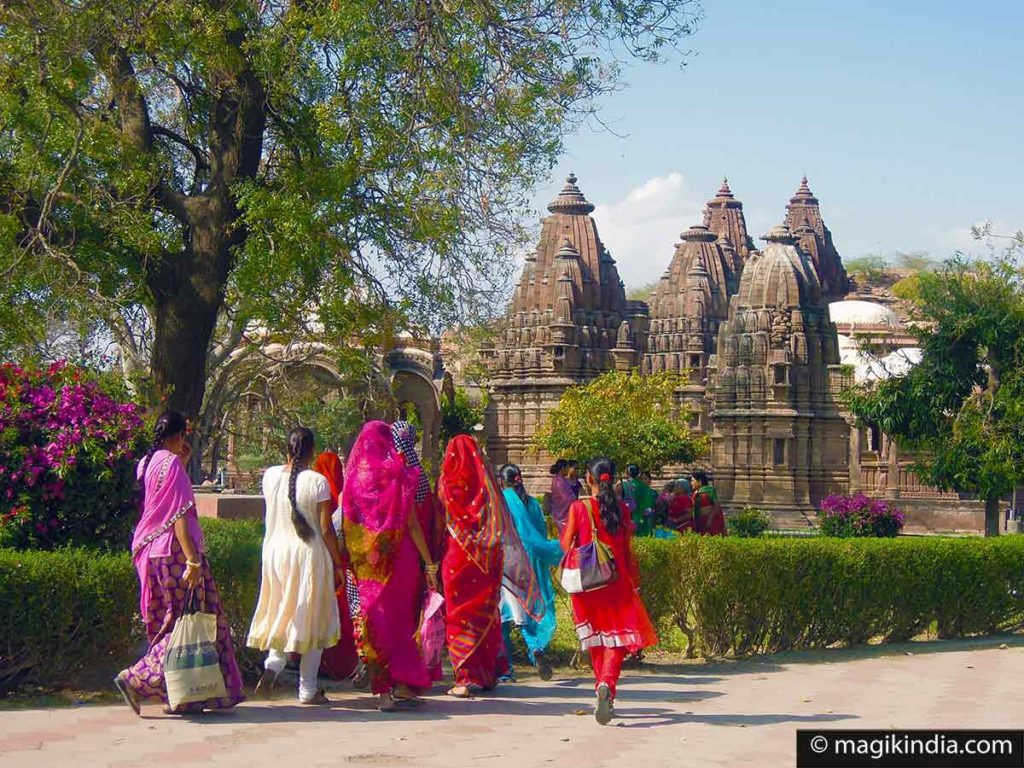
Mandore, 9 km from Jodhpur, is the ancient capital of the Marwar kingdom. It was abandoned in the middle of the 15th century, repeated invasions got the better of it. The capital will be moved to Fort Mehrangarh to ensure a better protection of the kingdom of Marwar.
All that remains of this once flourishing capital is the Mandore gardens which house ancient temples and royal cenotaphs built in red sandstone.
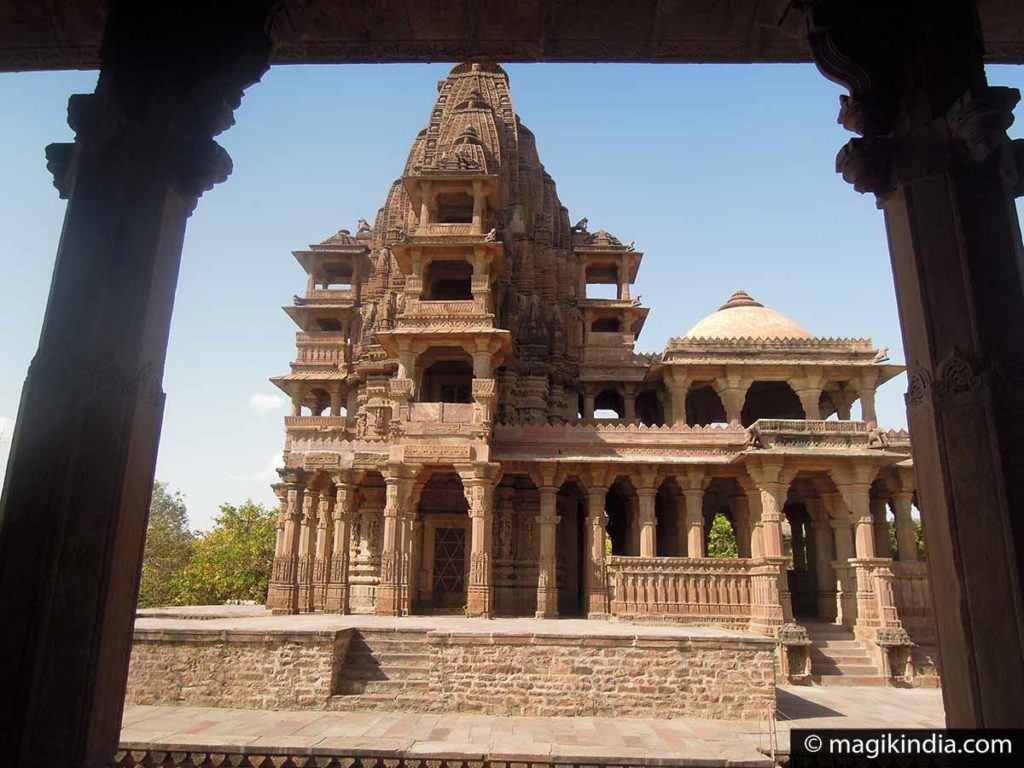
Bullet Baba Temple – Om Banna (50km)
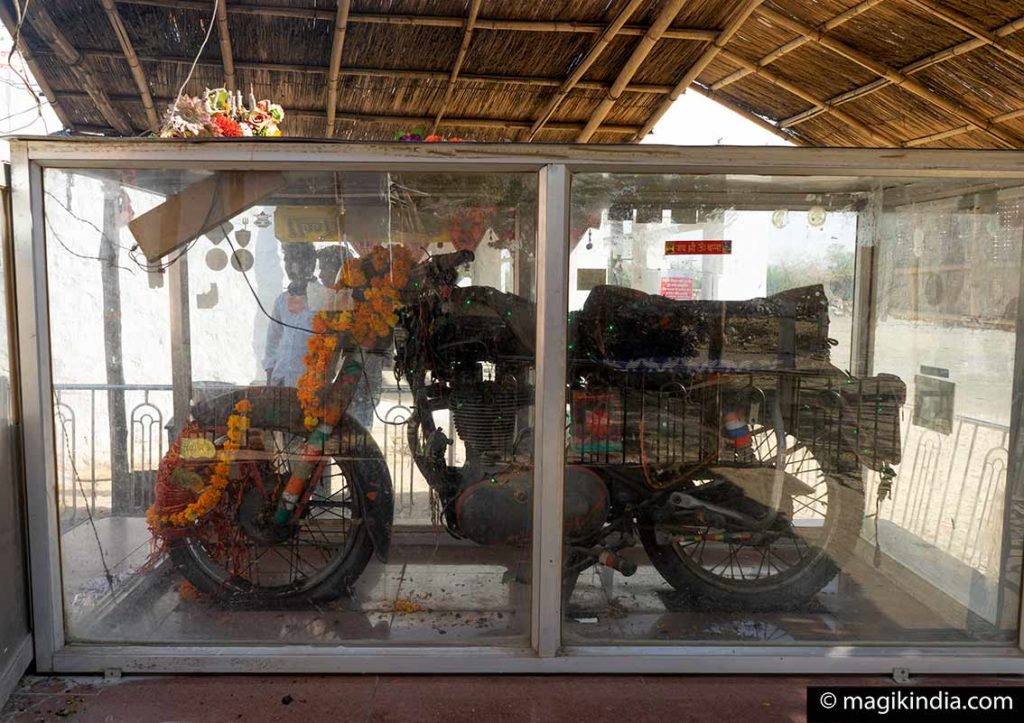
A truly surprising temple, 50km from Jodhpur, whose presiding deity is a motorcycle! Incredible India!
The story goes that in 1991 a young man called Singh Rathore Om (Om Banna) was heading for Chotila town when he lost control of his bike, a 350cc Royal Enfield Bullet, and hit a tree. He was killed outright. After the accident the bike was brought to a nearby police station but moved by itself back to the accident site. It did this several times. Villagers who heard of the miracle built a temple at the site of the accident.
Travellers stop here to pray for a safe journey. It is even customary to make an offering of alcohol!
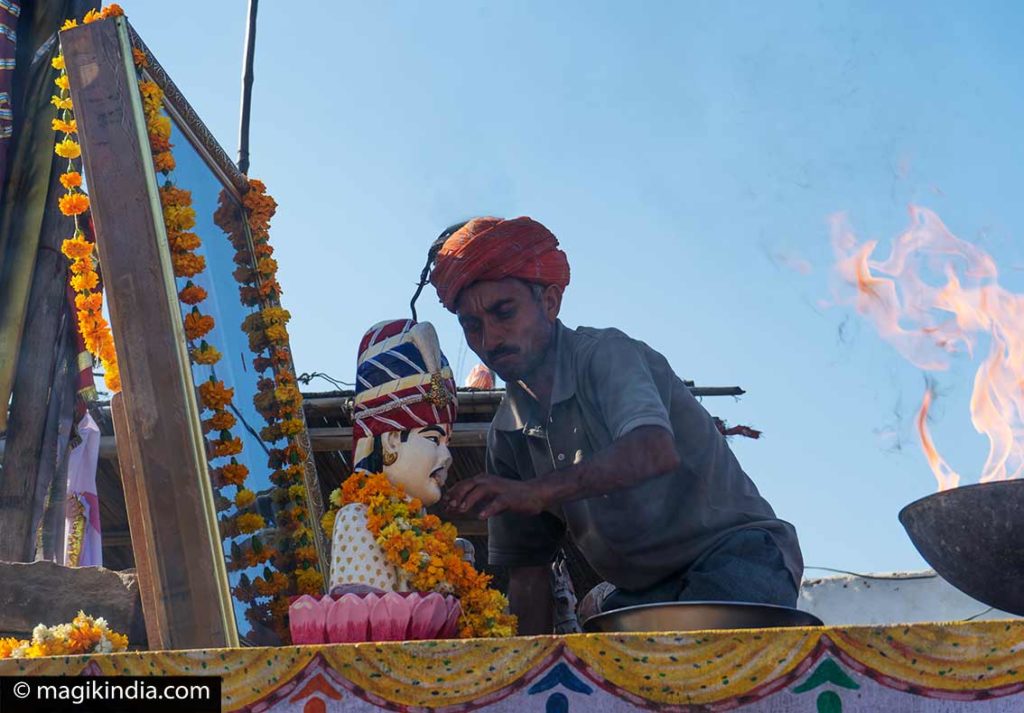
Osian (67Km)
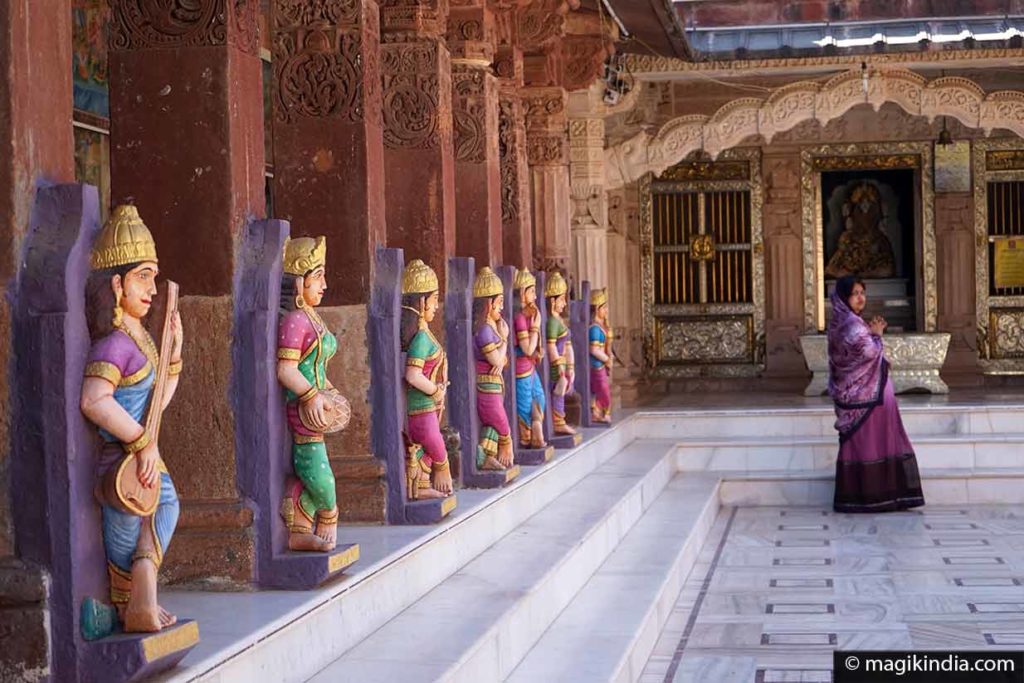
Gateway to the Thar desert, this small hamlet takes us back in time to the days when camel trains trudged endlessly along silk road. Osian (oasis) was known in ancient times as a Vedic centre and in the days of the Gupta kings (320-550 CE) as an important halt for caravans on the silk road. It was also an important centre for the Jain faith in the 8th to 12th centuries.
KNOW MORE ABOUT IT
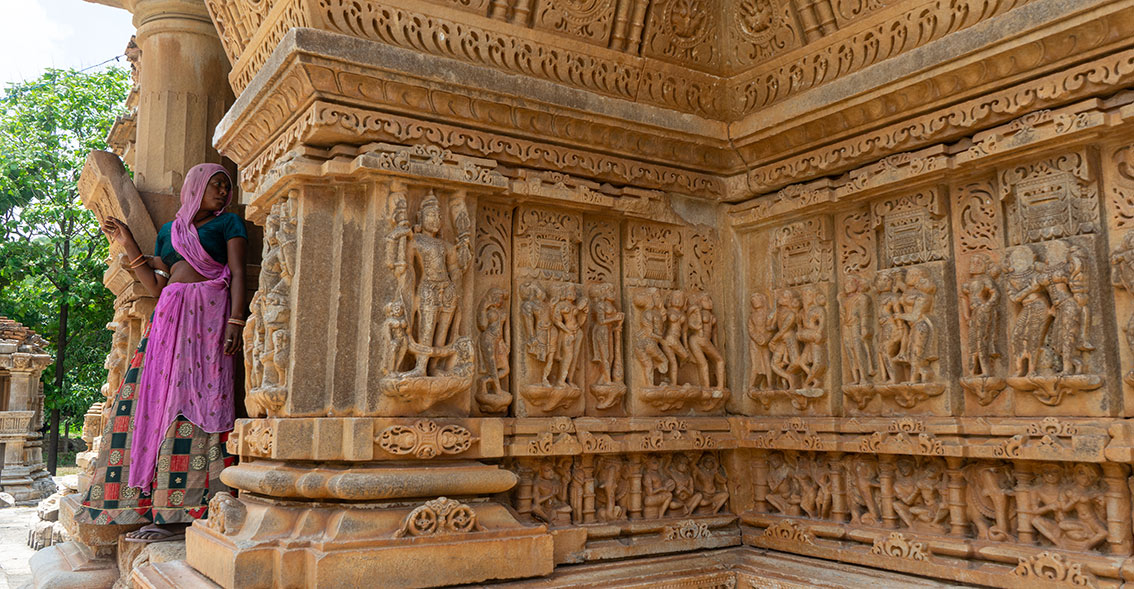
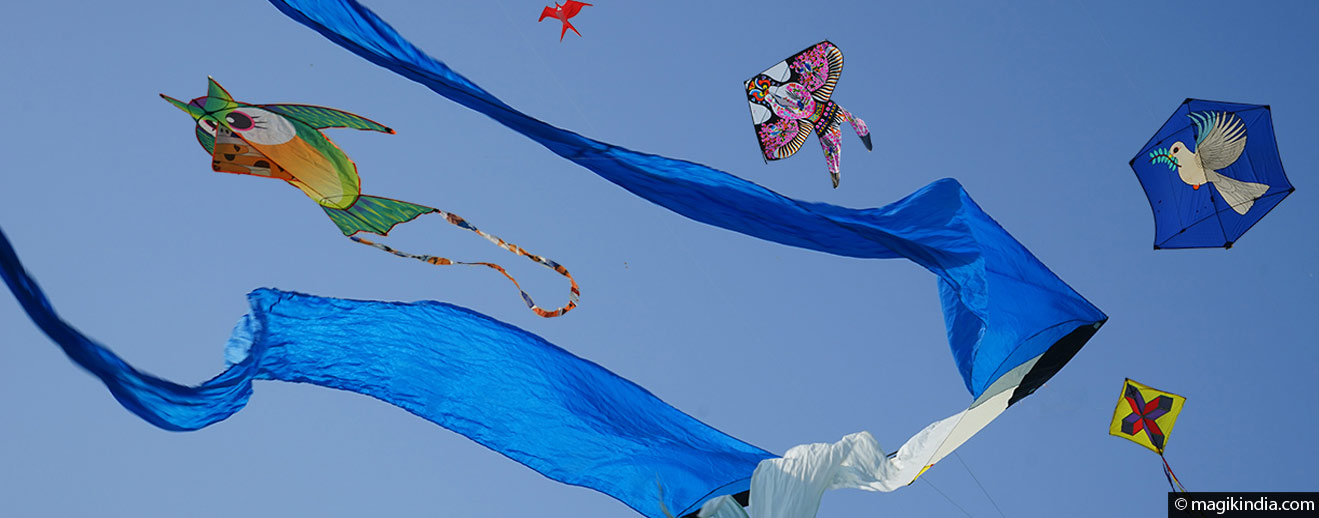

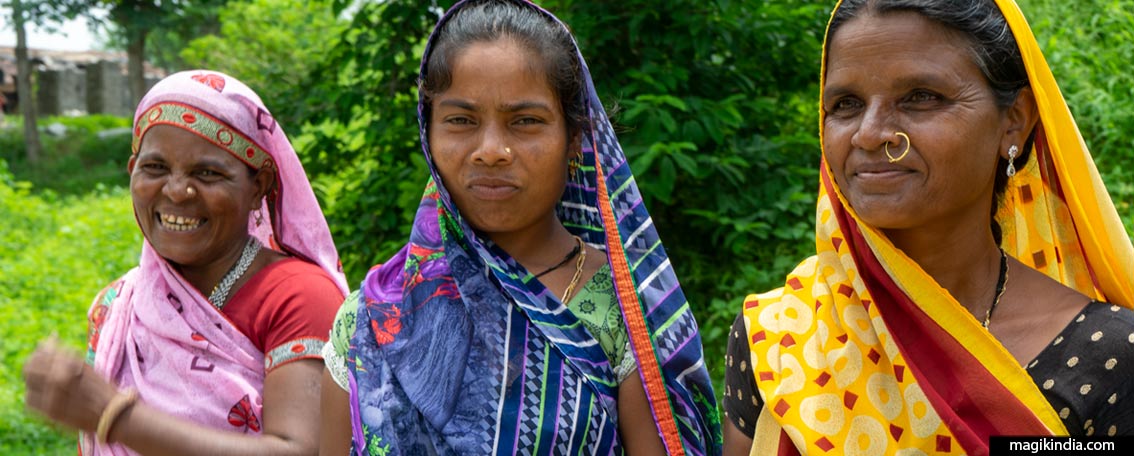


Impressive Blog !!!!! I will give you 10/10
Namaskar Ram, thanks for your very nice review.:)